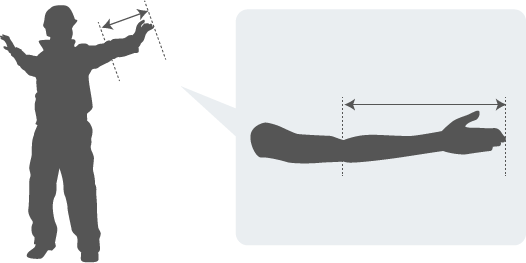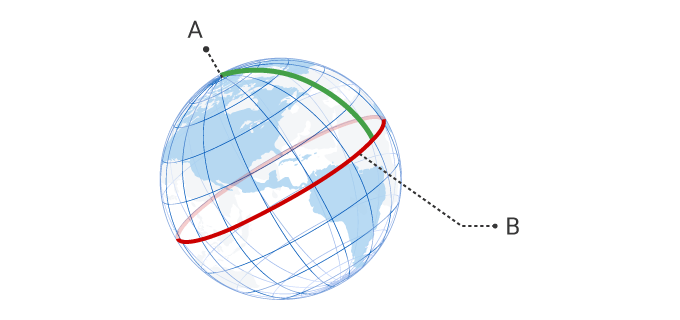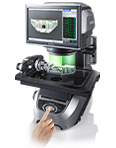History of Length Units
(1) Using the Human Body as the Reference
The way base units of length have been determined has changed greatly over time. Long ago, the base for reference was the human body. For example, the cubit was a unit that indicated the length from the elbow to the fingertips. This unit was used in ancient cultures in Mesopotamia, Egypt, and Rome. The length varied from region to region, ranging from 450 to 500 mm. Studies have proven that the pyramids of Egypt, known for their accurate construction, were built using two types of cubits: a long one and a short one. It is said that the standard measure of length in these eras was the body of the country's ruler or some other powerful individual. Even today, units of length based on the human body are used in countries such as the United States, such as the yard, foot, and inch.

(2) Using the Earth as the Reference
Length units based on the human body were used for thousands of years. This continued until a major change took place around 200 years ago. As the Age of Discovery came to an end and industry grew primarily in Western Europe, it became necessary to unify units of length on a global scale. In the 17th century, discussions were held in Europe regarding the unification of units. After a century of discussions, France proposed the unit of the meter (meaning "to measure" in Greek) in 1791. The reference at this time was the distance of the meridian from the north pole to the equator. One meter was set as 1/10,000,000 of this distance. Later, a prototype meter using an alloy of platinum and iridium, which is highly resistant to oxidation and abrasion, was created in France at the end of the 19th century as a result of the need to unify dimension references on a global scale.

- A
- North Pole
- B
- Equator
One meter was set as 1/10,000,000 of the distance of the meridian from the north pole to the equator.
(3) Using the Speed of Light as the Reference
From the onset, a unit that uses the Earth as the reference was understood to be difficult to apply for measurement. Problems also arose regarding errors during the creation of and the deterioration over time of the prototype meter. This led to discussions regarding the creation of a new reference. During the General Conference on Weights and Measures (CGPM) held in 1960, the length of one meter was defined according to the wavelength of orange light emitted from the element krypton-86 in a vacuum. In 1983, thanks to advances in laser technology, the length of one meter was defined on the basis of the speed of light and time. Today, one meter is defined as "the distance that light travels in a vacuum in 1/299,792,458 of a second," as defined in 1983.

- A
- Light
Distance traveled in 1/299,792,458 of a second = 1 m
- Measurement System BasicsDirect and Indirect Measurements
- Measurement System BasicsInternational System of Units





